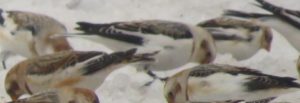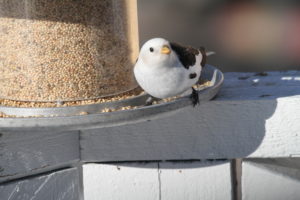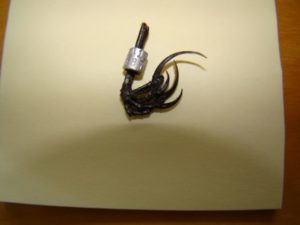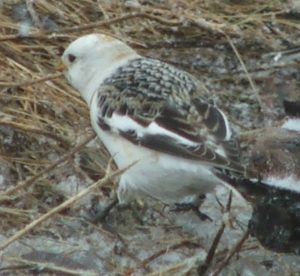
The central Snow Bunting has a band on its leg. Lise Balthazar picked it out when going through some old photos. Had to do some serious “cropping” to get to it. -NC
Two things prompted me to jot down this note: the above picture, sent to me by Lise Balthazar in Lanark County and a text yesterday from Bruce Murphy, a prolific bander in New Liskeard, to report that he had just recaptured a bird (one of 177 captured today) banded on April 12, 2020 in Riviere Saint Jean, Quebec. [So far this season, Bruce and the crew of students from Kern’s Public School of Flock have recaptured – this season alone – 14 Snow Buntings that they banded in other seasons/years and 2 “foreign birds – one from our banding site outside of Hagersville and the Riviere St. Jean bird.

Students from Kern’s Public “School of Flock” with Snow buntings that they’re helping to study. -JG
The main reason that we band birds is to find out where they travel to (and from). So I would encourage you to look over the birds that you see VERY carefully. Some may be sporting a leg band. That in itself is interesting but doesn’t tell us the identity of the bird – we need to see the band to make that determination. But….several birds have been identified by photographers with REALLY good camera lenses. One bird that we banded outside of Hagersville was identified at a feeder in Greenland through photographs.
Rick






